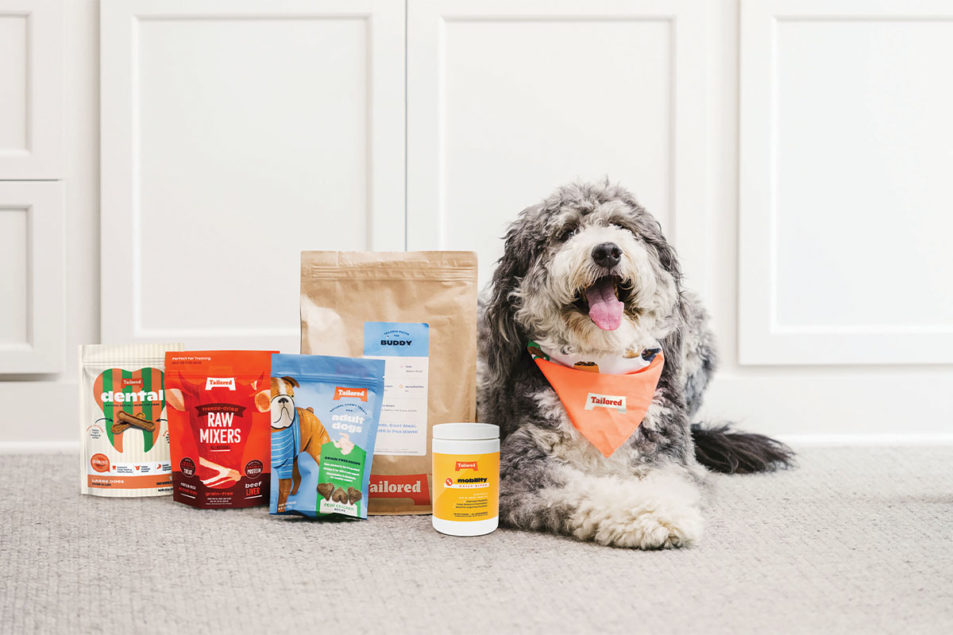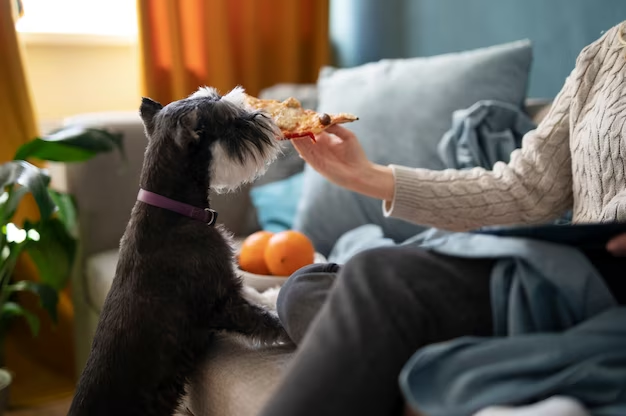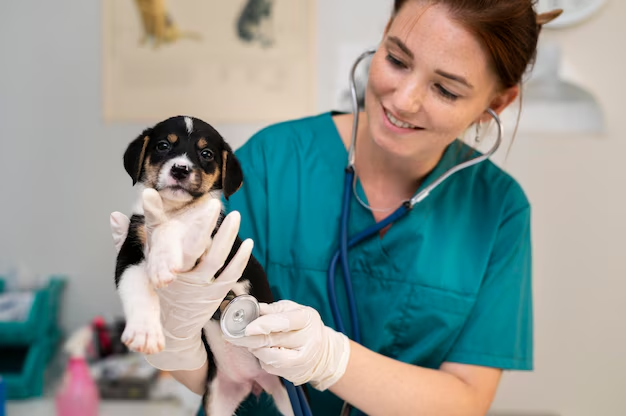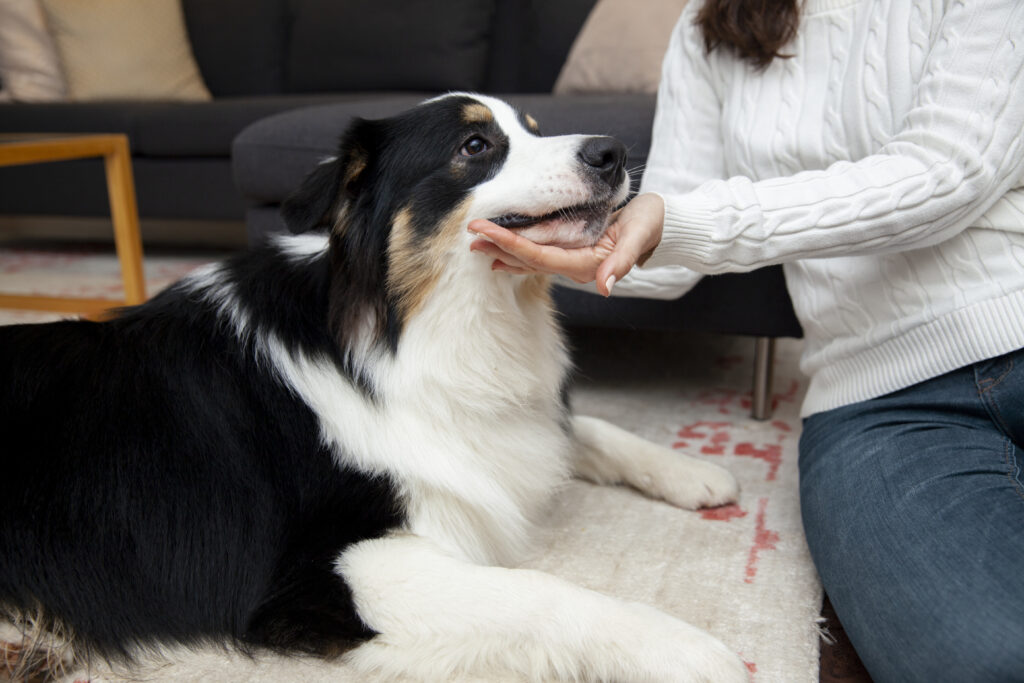
Our pets are cherished members of the family, and just like us, they deserve to be healthy and happy. Nutrition plays a crucial role in their well-being, and a personalized pet food plan can make all the difference.
This article dives into the world of personalized pet nutrition plans, providing you with 7 valuable tips to create a plan that’s perfect for your furry friend. Whether you have a playful pup, a majestic feline, or a cuddly critter, these tips will help you ensure they’re getting the nutrients they need to thrive.
Why Personalized Pet Nutrition?
While commercially available pet food is convenient, it might not always be the perfect fit for your pet’s individual needs. A personalized plan takes into account several factors, creating a diet that’s tailored to their specific health, age, and lifestyle.
Here are some key benefits of personalized pet nutrition:

- Addresses Specific Needs: Does your pet have allergies, weight management concerns, or require specific nutrients for optimal health? A personalized plan can cater to their unique needs.
- Promotes Overall Wellness: The right diet can boost your pet’s energy levels, improve their skin and coat health, and support their immune system.
- Reduced Risk of Health Problems: A balanced diet can help prevent health issues like obesity, diabetes, and even certain cancers.
- Enhanced Digestion: Personalized plans often focus on high-quality ingredients that are easier for your pet to digest, reducing stomach upset and promoting gut health.
Also Read: 05 Homemade Dog Food Recipes for Skin Allergies: Itchy Relief for Your Furry Friend!
Before You Start: Understanding Your Pet’s Needs
Creating a personalized plan starts with understanding your pet’s individual needs. Here are some key factors to consider:
- Species and Breed: Different species and breeds have different dietary needs. For example, cats are obligate carnivores, meaning they require a diet high in animal protein, while dogs can be omnivores with varying protein needs depending on breed.
- Age: Puppies and kittens have different nutritional requirements than adult pets, and senior pets might need additional support for their joints or digestion.
- Activity Level: Highly active pets like working dogs or athletic cats burn more calories and need a diet with higher energy content.
- Health Conditions: If your pet has any allergies, weight management concerns, or other health conditions, their diet needs to be adjusted accordingly.
Also Read: Vet-Approved Homemade Dog Food Recipes for Kidney Disease: An Ultimate Guide
Creating Your Personalized Pet Nutrition Plans: A Step-by-Step Guide
Here’s how you can develop a personalized nutrition plan for your beloved pet:
1. Consult Your Veterinarian:
This is the most crucial step. Your veterinarian is your partner in your pet’s health. They can assess your pet’s individual needs based on their species, breed, age, activity level, and any existing health conditions. Discuss your concerns and goals for your pet’s health, and together you can determine the best approach to personalized nutrition.
2. Consider the Ingredients:
When choosing a food for your pet, prioritize high-quality ingredients. Look for whole meat sources (chicken, fish, etc.) for protein, complex carbohydrates like whole grains for energy, and healthy fats like fish oil for skin and coat health. Avoid foods with fillers, artificial flavors, or added sugars.
3. Explore Your Options for Personalized Diets:
There are various approaches to personalized pet nutrition. Here are some possibilities to discuss with your veterinarian:
- Commercially Prepared Personalized Diets: Several companies offer subscription-based services where you answer questions about your pet, and they formulate a custom food plan with fresh or freeze-dried food delivered to your doorstep.
- Home-Cooked Meals: With your veterinarian’s guidance and approval, you can prepare homemade meals for your pet using fresh, whole ingredients. This allows for complete control over the ingredients, but requires careful planning to ensure nutritional balance.

- Kibble with Added Ingredients: You can supplement a high-quality kibble with fresh ingredients like cooked vegetables, fruits, or lean protein sources. This can be a cost-effective option while still providing additional nutrients.
4. Choose Your Personalized Plan:
Based on your veterinarian’s recommendations, your budget, and your lifestyle, choose the personalized plan that best suits your needs and your pet’s requirements.
5. Implement the Plan and Monitor Progress:
Once you’ve chosen your plan, gradually transition your pet to the new food. This helps avoid stomach upset. Monitor their progress closely, looking for positive changes in energy levels, digestion, skin and coat health, and overall demeanor. If you notice any negative changes, consult your veterinarian to adjust the plan as needed.
6. Maintain Consistency and Stay Patient:
It might take some time for your pet to adjust to a new diet. Be patient and consistent with your chosen plan. Most pets will adapt quickly, and you’ll likely see positive changes within a few weeks.
7. Regular Consultations with Your Veterinarian:
Schedule regular check-ups with your veterinarian to monitor your pet’s progress and ensure their dietary needs are being met throughout their life stages. This is especially important as your pet ages or if their health conditions change.

Remember: Your veterinarian is your best resource for creating a personalized pet nutrition plan. By working together, you can ensure your furry friend receives the optimal nutrition they need for a long and healthy life.
Final Thoughts: Personalized Nutrition for a Happy and Healthy Pet
Investing in your pet’s personalized nutrition plan is an investment in their health and well-being. By understanding their individual needs and creating a diet that caters to them, you’re setting your furry friend up for a long, happy, and healthy life. Remember, consult your veterinarian for guidance, explore your options, and be patient with any transitions. The rewards of a well-nourished and thriving pet are immeasurable.
So, take charge of your pet’s health and embark on a journey of personalized pet nutrition! They’ll thank you for it with wags, purrs, snuggles, and unconditional love.
07 Tips on How to Make a Personalized Pet Nutrition Plan: FAQs
Creating a personalized pet nutrition plan might seem daunting, but with the right information and guidance, you can craft a diet that fuels your furry friend’s best life. Here are 10 frequently asked questions to empower you on this journey:
- I know this article mentions consulting a vet, but how crucial is it for creating a personalized plan?
Consulting your veterinarian is the absolute foundation of creating a personalized pet nutrition plan. They have the expertise to assess your pet’s individual needs based on factors you might not even consider. Your vet can identify any underlying health conditions that might influence dietary choices, ensure the plan meets their specific nutritional requirements (like protein needs for cats vs. dogs), and guide you on safe transition strategies to avoid digestive upset.
- Okay, I get the vet visit. But what questions should I ask them about my pet’s personalized plan?
Here are some key questions to discuss with your veterinarian:
- Based on my pet’s breed, age, and activity level, what are their specific nutritional needs?
- Are there any health concerns that require dietary adjustments (e.g., allergies, weight management)?
- What are your thoughts on commercially prepared personalized pet food plans vs. home-cooked meals vs. supplementing kibble?
- How can I safely transition my pet to a new diet?
- How often should I schedule check-ups to monitor my pet’s progress on the personalized plan?
- This article mentions different options for personalized diets. Can you elaborate on those?
Sure! Here are the main approaches to personalized pet nutrition:
- Commercially Prepared Personalized Diets: Companies like JustFoodForDogs and NomNomNow offer subscription services. You answer questions about your pet, and they formulate a custom food plan with fresh or freeze-dried food delivered to your doorstep. This is convenient but might be pricier.
- Home-Cooked Meals: With your veterinarian’s guidance, you can prepare meals using fresh, whole ingredients. This allows for complete control over the ingredients but requires research and planning to ensure nutritional balance.
- Kibble with Added Ingredients: This is a budget-friendly option. You can supplement a high-quality kibble with fresh ingredients like cooked vegetables, lean protein sources, or healthy fats like fish oil.
- If I choose home-cooked meals, where can I find recipes?
There are many resources available! Here are a few starting points:
- Your veterinarian might have recommendations for websites or cookbooks with recipes specifically formulated for pets.
- Look for reputable online resources from veterinary associations or animal nutrition websites. These recipes are typically designed to be nutritionally balanced for your pet.
- Consider consulting with a pet nutritionist who can create a personalized meal plan based on your pet’s specific needs.
- My pet is a picky eater. How can I make them adjust to a new personalized diet?
Transitioning can be tricky with picky eaters. Here are some tips:
- Start Slowly: Gradually introduce the new food by mixing a small amount with their current food over several days, slowly increasing the new food and decreasing the old food.
- Warm it Up: Some pets prefer slightly warmed food. You can try microwaving the new food for a few seconds to enhance the aroma.
- Toppings and Mix-ins: Entice your pet with a sprinkle of their favorite healthy topper like a bit of shredded cooked chicken or salmon.
- What if my chosen personalized plan seems expensive? Are there cost-effective options?
Creating a personalized plan doesn’t have to break the bank! Here are some budget-friendly strategies:
- Supplementing Kibble: Consider high-quality kibble as the base and supplement it with affordable, healthy additions like cooked vegetables, fruits, or lean protein sources like cooked chicken or eggs.
- Cook in Bulk: If you choose home-cooked meals, prepare larger batches and freeze portions for later use. This can save time and money in the long run.
- Compare Prices: Research different commercially prepared personalized food plans and kibble brands to find options that fit your budget.
- Are there any risks associated with personalized pet nutrition plans?
The biggest risk is nutritional deficiencies if a homemade plan isn’t balanced properly. This is why consulting your veterinarian and using recipes from reputable sources is crucial. Transitioning too quickly can also lead to stomach upset. Introduce any new food gradually.
- How will I know if the personalized plan is working?
Monitor your pet for positive changes! Look for improvements in:
- Energy Levels: Is your pet more playful and active?
- Digestion: Are their bowel movements regular and formed?
- Skin and Coat Health: Is their fur shiny and healthy-looking?
- Appetite: Are they eating well and showing interest in the new food?
- Overall Demeanor: Does your pet seem happy and content?
- What if I don’t see any improvement after a while, or my pet seems worse?
If you don’t see positive changes within a few weeks, or your pet seems to have digestive issues or other problems, consult your veterinarian. They can help you adjust the plan or identify any underlying health concerns.
- Is a personalized plan a lifelong commitment for my pet?
A personalized plan should be adaptable as your pet’s needs change throughout their life. Regular checkups with your veterinarian will help ensure their dietary requirements are met during each stage, from puppy/kittenhood to adulthood and seniority. Your vet might recommend adjustments to the plan based on factors like activity level changes or potential health conditions that arise.

